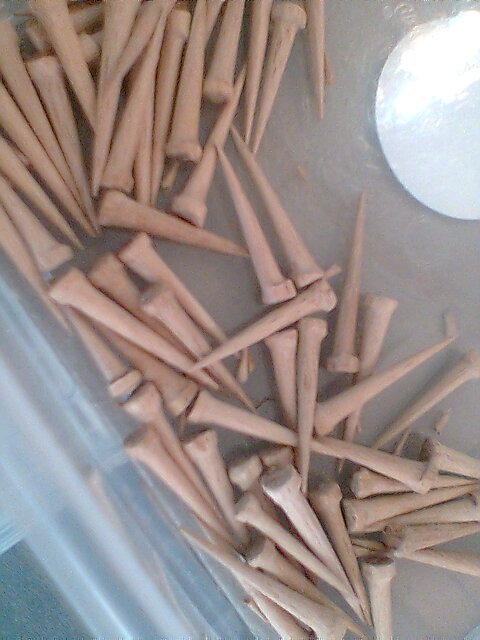The 1st Tamworth Textile Triennial exhibition, Sensorial Loop, is currently on at the Goulburn Regional Gallery until 19 May 2012. This is the premier exhibition in the ‘world’ of Australian textile arts, having been around since 1975, (despite the current title). The exhibition’s current change to a three-yearly event is, I understand, designed to enable the Tammworth Regional Gallery to better resource (both dollars and personnel) this major national touring exhibition.
This latest re-invention is certainly maintaining the high standards of previous shows. Two weeks ago I travelled to Goulburn to see the exhibition and specifically to hear a floor talk by Michele Elliot. Michele’s presence at the gallery was more than just a talk by a visiting artist, she was in the process of installing her work hemisphere’s:drawn to you still, 2011. The work consists of two paper pulp disks between which are strung some 1,000 red threads, tied to small hand-made pegs about 3 cms long.
Michele Elliot working on the Goulburn installation
It may seem odd to still be installing a work once the exhibition has opened, however the installation process is itself a major part of Elliot’s work. Time, as she explained in her talk, is of interest to her in both the making and the representation of her work. At each of the nine exhibition venues Elliot will remake this work with the assistance of local artists. At the end of each showing the work will be cut and returned to Elliot.
A close-up of the pegs that Elliot has made as part of this work.
The fact that Elliot is able to travel to each venue to install the work and that the show includes other large-scale contributions such as Carly Scoufos’ Interlaced Manuscript, 2011, which replicates the onsite installation of her work onto her grandfather’s dairy shed wall, demonstrates that moving to a three year schedule is allowing resources to be directed with good outcomes for both participants and audience.
Apart from Elliot’s work I was most interested in a large sculptural work by Lucy Irvine, Continuous Interruptions, 2011, which writhed its way around three sides of an exhibition wall. This was an intricate weaving of irrigation pipe and cable ties. It became the target of my drawing for that day.
I would strongly recommend that you see this exhibition. The strength of the works, both materially and conceptually, will certainly dispel any preconceived ideas you may have about textiles as a ‘nanna’ craft’.











